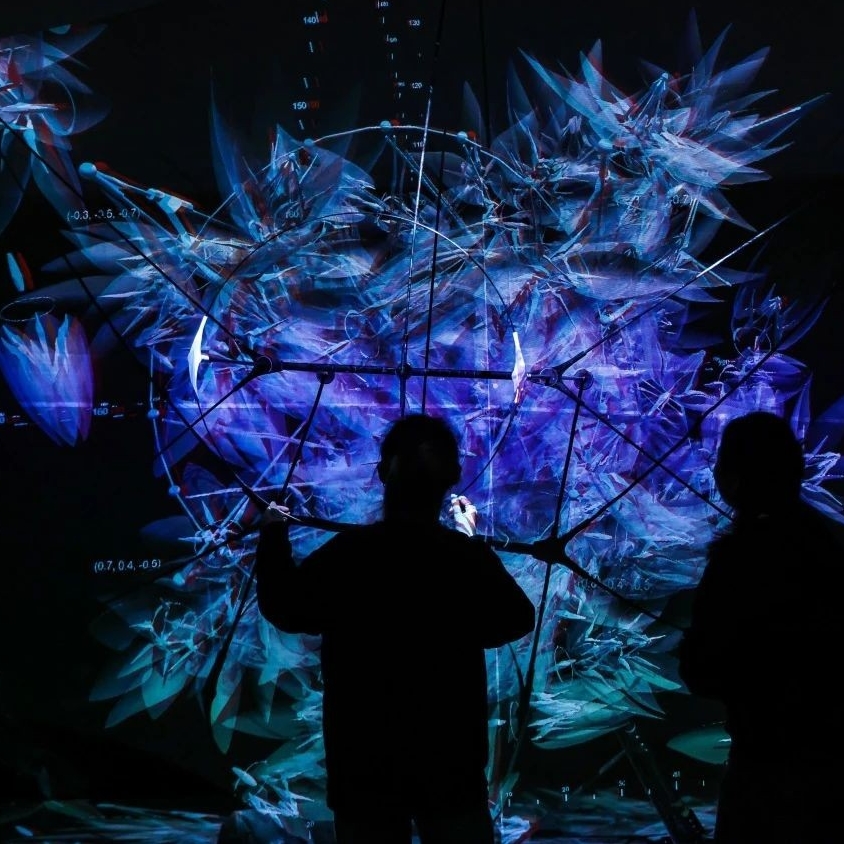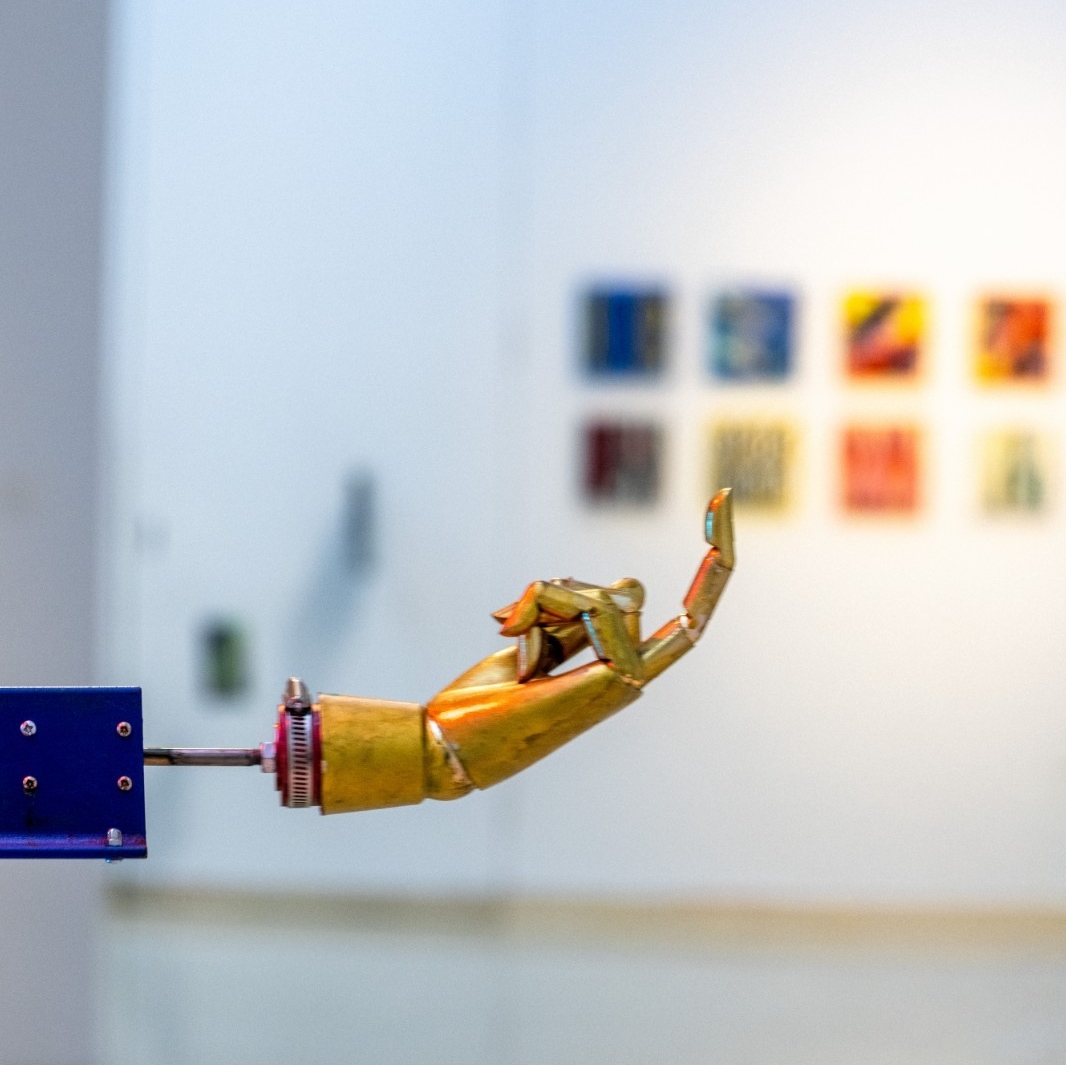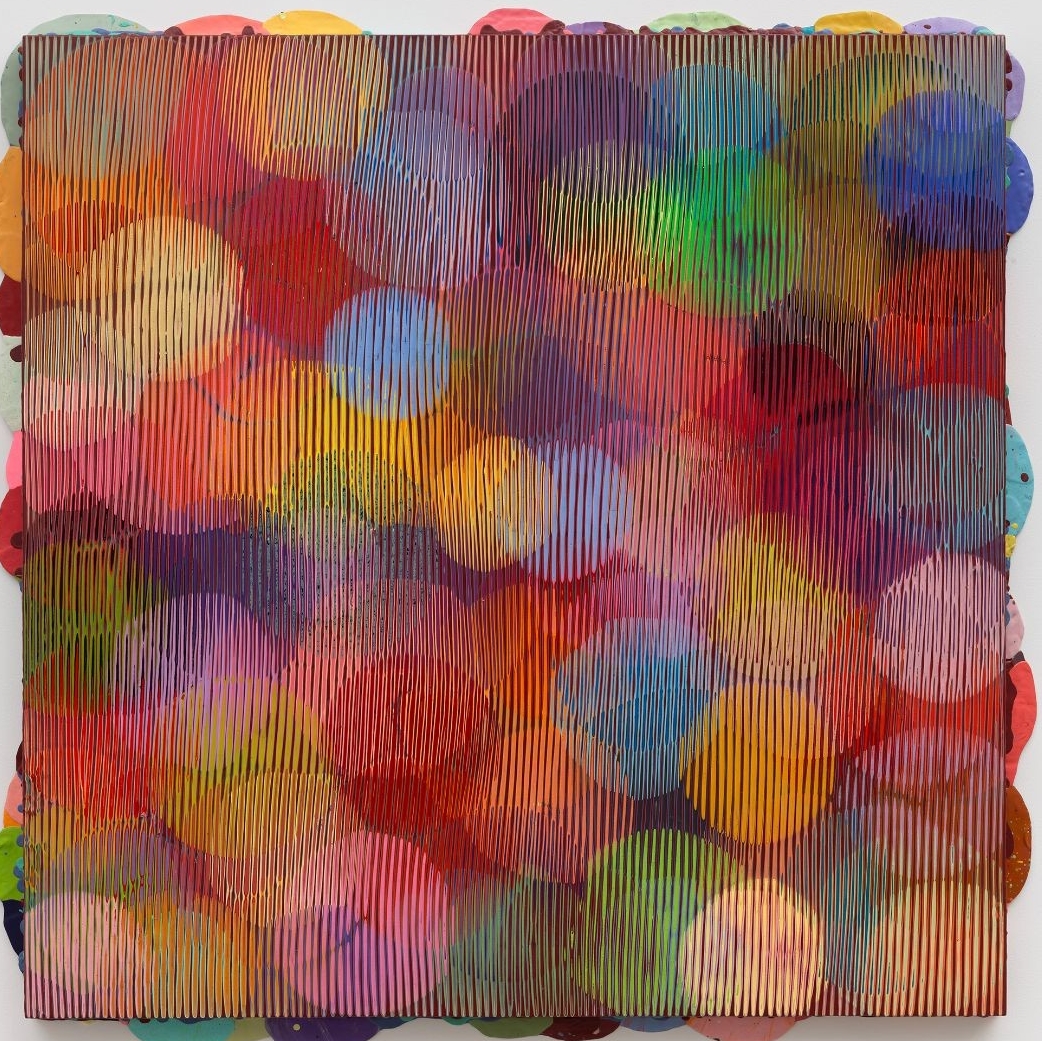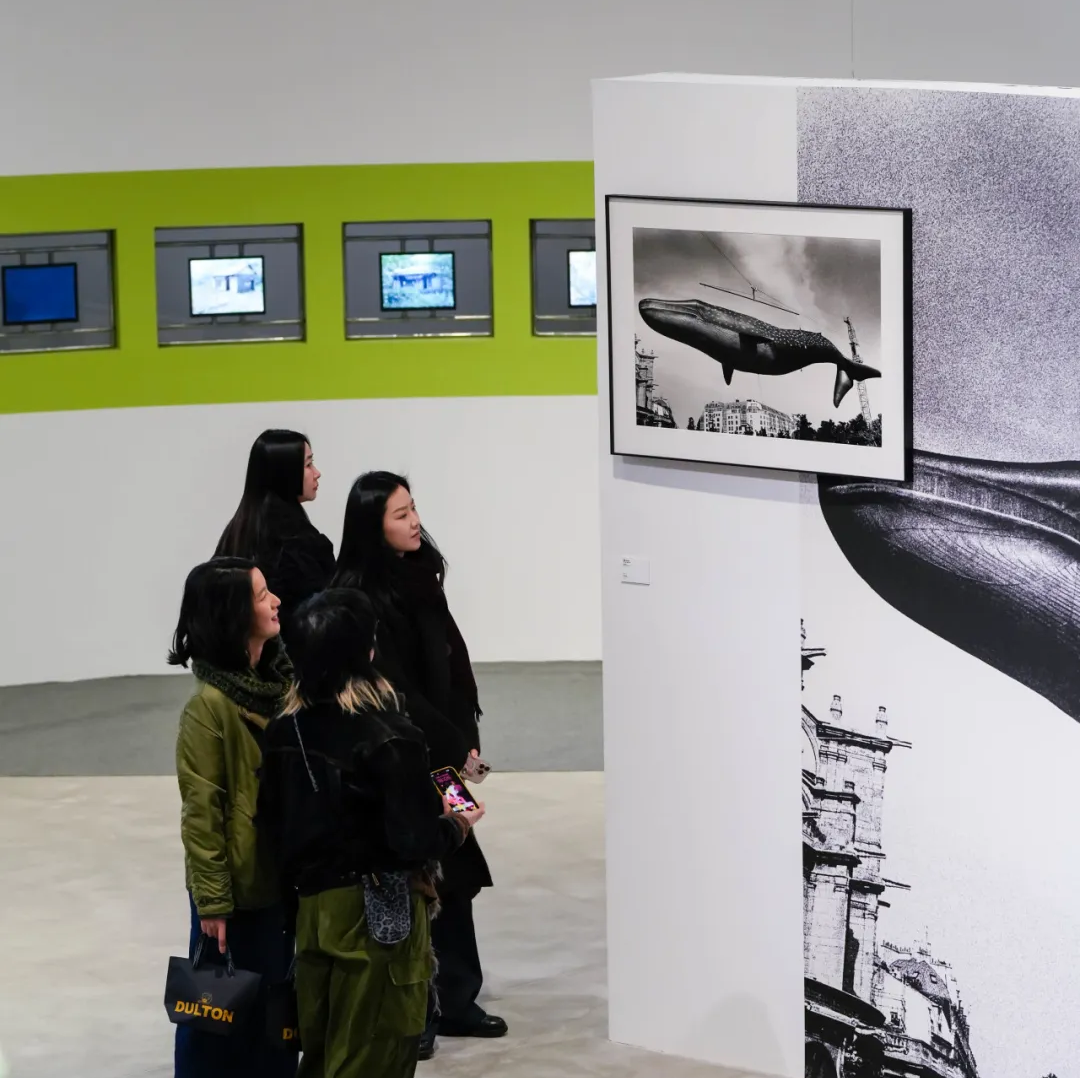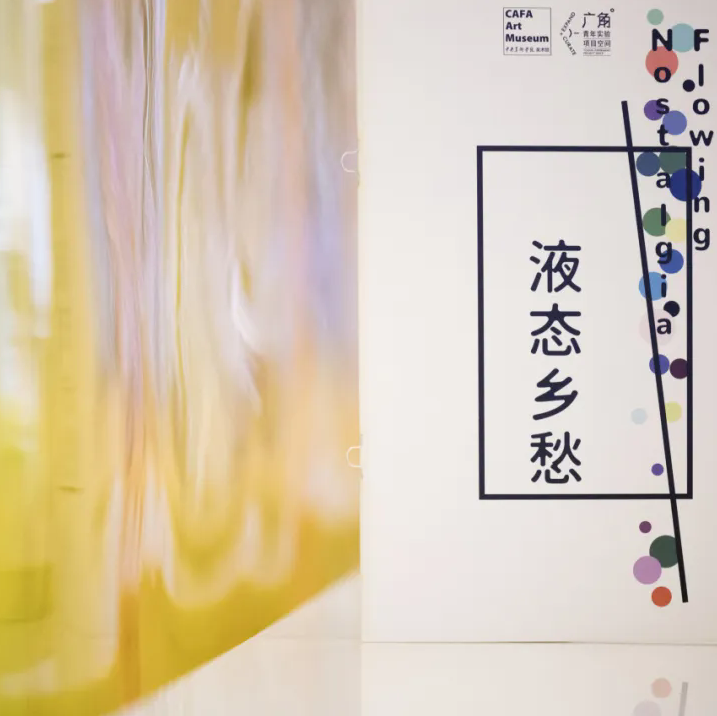
In the early summer of 2021, the postgraduate degree show of CAFA was naturally included in the hot topics and highlight moments within the art circles. With the official opening of the first part of the 2021 CAFA Graduation Season, the show for postgraduates has attracted numerous audiences who have reserved a place for viewing the graduation creations offline. While for those who were not able to visit the show in person, the diverse reports from various media and Wechat Moments have provided a great chance to experience the show online. For most audiences, how to observe and understand the works using multiple media and the thoughts implied and delivered by the artists, might seem confusing.
No one can deny the special conditions of this graduate class of CAFA. It is not only because they are the 100th graduate class of CAFA, but also they are the first graduate class after the pandemic in the year 2020. In this case, how would these graduates respond to the shaky and reshaped social rules and environment brought by the pandemic through their thoughts and creation? This is a highlight of this show that is worth observing. Meanwhile, the online classes, online exhibitions and remote discussions which were developed during the pandemic, have imperceptibly influenced the way that people perceive the world and the dimension of people’s relationship with art. Confronting the global catastrophe and challenge, being sensitive to the news, paying attention to the situation throughout the world as well as the alienation of lifestyle and expression of thoughts during the quarantine were reflected in the works of postgraduates this year more than ever.




Exhibition View
The Layout of the Exhibition:
More Intensive Space and More Effective Coordination
Compared with previous shows, this year, the works of postgraduate students were intensively present in the CAFAM, the Exhibition Hall for Plaster Model, and the No. 7 Building. The absence of the annual iconic “white exhibition halls” constructed temporarily in the campus during the Graduation Season of CAFA has made the booth allocation and exhibition layout a great challenge for both teachers and graduates. In the context of the reduction of the physical exhibition space, the School of Experimental Art and the School of City Design shared the first floor of CAFAM, while the School of Design and the Department of Sculpture shared the third floor of CAFAM. With the cooperation and the merging of different departments, some unique sparks have collided.



Exhibition View
On the second floor of the CAFAM, the so-called “easel works” from the Foundation Department, the Oil Painting Department, the Printmaking Department, the Mural Painting Department, and the School of Chinese Painting were displayed here. It is interesting to note that among works from the Printmaking Department, the Mural Painting Department and the School of Chinese Painting, some graduates actively attempted creations featuring spatial, installation-style and sculpture-like expressions, rather than limiting themselves to the two-dimensional plane space.
Another noteworthy consideration was that the concept of the traditional studio as a unit has been broken. In the exhibition halls of the Department of Oil Painting and the Foundation Department this year, students’ personal characteristics and ideas have been richly presented. By doing so, the questions such as to what extent the supervisors should intervene and influence the students’ techniques, concepts and methods during their creative process at the postgraduate level, were proposed for wide discussions. The small independent exhibition hall on the fourth floor of the CAFAM presented the works created by doctoral graduates of the Graduate School, which shows a more solid research context and a more mature creative outlook.




Exhibition View
Concentrating most of the graduation works in the CAFAM would undoubtedly allow visitors to browse and capture the highlights of the show in a relatively short time. However, the unprecedented density of works and the relative limitations of the exhibition space might inevitably make the audience fall into a dazzling visual experience and a huge amount of reading of information. In this process, works with a sense of movement, interaction and relatively large volume could often capture the attention of the audience at this first time, while some works closely linked to the structure of the art museum were easily ignored. The special ingenuity that relied on the exhibition space was also difficult for most people to initially receive.
In stark contrast to the bustle of the CAFAM, there were the visual presentations of the graduation theses of the School of Humanities and the School of the Art Management & Education displayed in the Exhibition Hall for the Plaster Model, and the architectural design model and illustrations of the School of Architecture showcased in No.7 Building. Specifically, in the Exhibition Hall for Plaster Model, the graduate studies of the School of Humanities and the School of Art Management & Education were displayed in the form of a double circle, which echoes the appearance and the internal sculpture displayed in this space. Here, it was more like being in a quiet library for the audience, pacing and reading slowly along the given path in the circular space.


Exhibition View
Issues of concern:
Reflections on the Pandemic, Life Experience and an International Perspective
The topics that the graduates researched during this year and were concerned about were reflections on the pandemic and life in quarantine which seemed to have occupied the themes of the graduation creations. Among these works, some graduates focused on the profound real-life experience of being in Wuhan during the pandemic and translated such an experience into a virtual urban space. The imagined city was projected linking with the social psychology imprisoned by the health QR code. While other works paid attention to the reshaped social rules and human behavior during the quarantine, as well as the emotional alienation of human beings within society. Also, the new response measures and life experiences adopted by society and people were mentioned in some creations.

Exhibition View
Source: The School of Design at CAfA
In addition to the creations that directly represent themes related to the pandemic, some works also conveyed information about public psychology and concerns during and after the pandemic. Specifically, on the one hand, it was embodied in the outward sensitivity to news, vulnerable groups and other issues. On the other hand, some creations also shifted their attention back to daily life, family affection and personal emotions offering a more delicate experience and reflection.


Exhibition View
At the same time, the expression of a high dependency on the information network and virtual space was also represented in some works. The most typical situation was that due to the forced termination and closure of a large number of physical exhibitions and offline activities, the online exhibitions, virtual space and technology were rapidly developed and expanded. Therefore, reflections on topics such as online space, events and related technologies, up to the recent trending topic NFT art, were also scattered in this graduation exhibition using various creative appearances and discussion methods.
Moreover, topics related to disease, life and death, women and power, invasion and colonization, culture and tradition, the present and the future, among other grand and global issues were also discussed and deeply immersed in some works. Perhaps the long-time quarantine life has made the internet the only channel able to communicate with the world for most people. Under this circumstance, the international relations, ethnic contradictions, and social conflicts that usually appear in TV news, on the internet and social media, suddenly approached everyone’s real life. People could more or less connect those issues with different aspects of their personal life experience, and seemed to be more willing to express opinions than before.

Exhibition View

Exhibition View
Source: The School of Experimental Art at CAFA
Overall, in addition to the recording, representation and translation of personal emotions, life segments and ideological pursuits, the creation of this graduate class focused more on life, the state and emotions of an individual in the society. Instead of restricting their horizons and expressions in an insular individual or an isolated section, they attempted to explore the existence of multiple relations—the relationship between countries, cultures, nations, the relationship between society and people, the relationship between each other, and the relationship between the self and memories, etc.
Creation and the Presentation Method:
Mutual Interpretation of Text and Image, Interactive Experience and “Hybrid Discipline”
In terms of the creative method and the exhibition presentation, fine arts related majors still showcased their in-depth research and exploration of delicate techniques. While the School of Humanities changed the way of merely displaying theses in previous years, but combined the booths in the Exhibition Hall for the Plaster Model with various research topics instead. Graduates tried to realize the visual representation of their research topics through multiple media in their booths. By doing so, the art history and theory-based graduate outcomes produce more effective interaction with the audience.



Exhibition View of the School of Humanities at CAFA
In addition, the diversified creative forms presented in this exhibition were also one of the highlights. The production techniques and presentation methods of many works have broken the audience’s inherent perception of the discipline. For example, in the exhibition area of the Department of Sculpture, many works showed as interactive installations featuring either a combination-style or mechanical sense. Moreover, some works of the Printmaking Department presented attempts based on digital technologies and 3D printing, experimental animation and other artistic language. While some graduate works from the School of Chinese Painting, the Department of Mural Painting practiced the forms of sculpture and mixed-media installation as well.



Exhibition View
Source: The Department of Sculpture at CAFA
Obviously, the mutual intervention between art disciplines is only one aspect of the interdisciplinary characteristics of the show this year. From graduate creations of the School of Experimental Art, the School of Design and the School of City Design, the audience may be able to see the intervention and effect of other disciplines and cutting-edge topics such as science, information technology, biology, artificial intelligence, etc. in artistic creation. In fact, from the professional discipline setting and research directions of CAFA in recent years, we may be able to find the basis of the so-called “hybrid discipline” characteristic. For instance, the directions of “Art and Technology”, “Robotic Art and Design” and “Biological Art and Design” in the School of Design, and directions of “Material Representation of Artistic Expression” and “Future Media Art” in the School of Experimental Art...the establishment of all these disciplines and research directions focuses on and concerns the mutual interpretation and intersection of art and cutting-edge science and social issues from an educational level. The academy also collaborates with scientific research institutions, and technology companies to establish joint laboratories and teaching bases for students, which greatly supports students’ creation and thinking as well as their final presentation in the degree show. The intersections and collisions between these disciplines and topics also lead creators and audiences to imagine the infinite time and space that art and thought can eventually reach.

Exhibition View
Source: The School of Experimental Art at CAFA

Exhibition View
Source: The School of Design at CAFA
Undoubtedly, interdisciplinary art creation provides richer nourishment for this exhibition, and to a certain extent opens art creation itself to more audiences with diverse disciplinary backgrounds and social experiences. At the same time, many interactive installations and some humorous works with a broad interpretation space have also attracted more viewers’ attention, participation and even recreation. Moreover, the increasingly active internet dissemination after the pandemic and other factors also contributed to the popularity of the CAFA postgraduate degree show this year.

Exhibition View
Source: The School of Design at CAFA
What follows the end of the postgraduate degree show is the launch of the undergraduate graduation exhibition. For undergraduates, they would confront the same challenges as the postgraduate graduates, namely, narrating their own stories in a more compact display space than previous years, and perhaps trying to stand out in the bustling environment of the degree show.
It is noteworthy that for each class of graduates, on the one hand, they are always troubled by the limitation of the given exhibition space; on the other hand, they also need to figure out whether they could handle and manage the larger space with their current creations. When we talk about the larger exhibition space in this era, with the rapid development of the online exhibition and virtual space, the exhibition space itself may face a vast expansion across time and space. Meanwhile, they should also realize that with the rapid development of science and technology, information and the period, the dimension and horizon of art creation could reach far more than the universe. However, how to realize and practice the fancy ideas and concerns and present them in the actual exhibitions as well as interact effectively with the audience, should be the point to be further considered and explored by every graduate.
Text by Emily Weimeng Zhou, edited by Sue.
View of the Exhibition by Hu Sichen (Except for Special Annotations)


